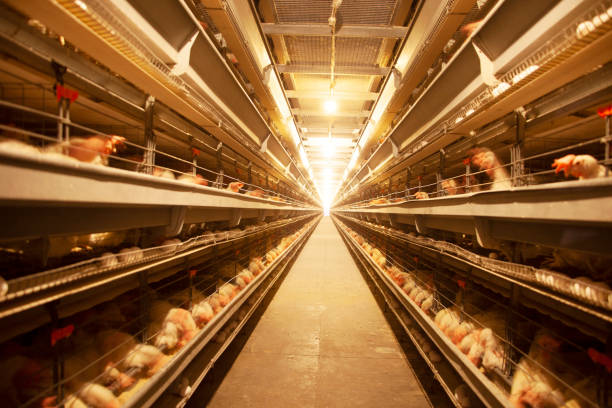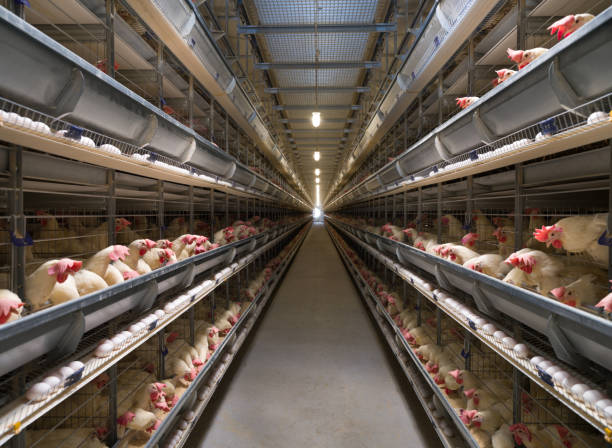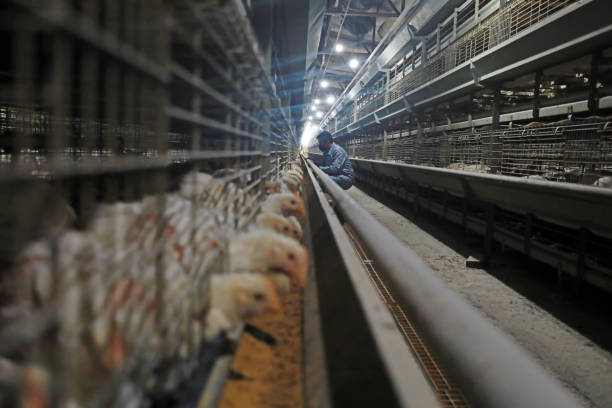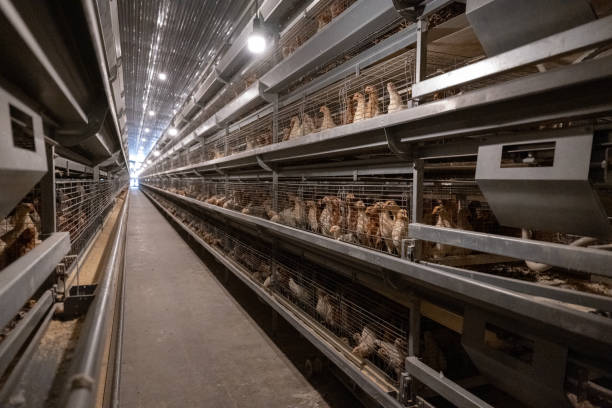
Chicken Farm Business Startup: Low-Cost Strategies for African Farmers
Chicken Farm Business Startup: Low-Cost Strategies for African Farmers
Starting a chicken farm business in Africa can be a rewarding venture, providing a sustainable source of income and contributing to food security. However, the initial investment can be a significant hurdle for many aspiring farmers. Fortunately, there are numerous low-cost strategies that African farmers can implement to kickstart their poultry businesses without breaking the bank.
Understanding the Landscape and Opportunities
Africa’s poultry industry is experiencing rapid growth. The demand for chicken meat and eggs is steadily increasing due to population growth, urbanization, and changing dietary habits. This presents a significant opportunity for local farmers to tap into the market. Starting small and scaling up gradually is often the most sustainable approach, especially when resources are limited.
Identifying Your Niche
Before diving in, it’s crucial to determine your niche within the poultry market. Will you focus on egg production (layers) or meat production (broilers)? Perhaps a dual-purpose breed that offers both? The choice will influence the type of chicken you raise, the housing requirements, and the feeding strategies you employ. Consider factors like market demand in your area, your available resources, and your personal preferences.
Low-Cost Housing Solutions
Housing is a major expense in chicken farming, but cost-effective alternatives abound.
Utilizing Local Materials:
Explore locally available resources like bamboo, wood, mud bricks, and thatching grass to construct your chicken coop. These materials are usually cheaper and readily accessible compared to modern building materials.
Simple Structures:
Focus on building functional rather than elaborate structures. A well-ventilated, predator-proof shelter is the primary goal. A simple rectangular or A-frame design can be easily constructed with basic tools.
Deep Litter System:
The deep litter system offers a cost-effective floor management solution. It involves maintaining a thick layer of organic material (wood shavings, straw, or rice husks) on the floor of the coop. This litter absorbs droppings, provides insulation, and can be turned into valuable compost later.
Free-Range or Semi-Intensive System:
Consider using a free-range or semi-intensive system, especially in rural areas where land is readily available. This reduces the need for large, enclosed housing structures. Provide a simple shelter for nighttime protection and allow the chickens to roam freely during the day.
Optimizing Space and Ventilation
Proper ventilation is crucial for preventing respiratory diseases and maintaining a healthy environment for your chickens. Ensure adequate airflow by incorporating vents or openings in the coop’s walls. Overcrowding can lead to disease outbreaks and reduced productivity. Provide sufficient space for each bird based on their age and breed.
Procuring Affordable Chickens
The initial cost of acquiring chicks can be another significant expense.
Sourcing Local Breeds:
Local chicken breeds are often more resilient and adaptable to the local climate and disease challenges. They are also typically cheaper than imported breeds. Research and identify the best performing local breeds in your region.
Day-Old Chicks vs. Growers:
Day-old chicks are generally cheaper than grower chickens (several weeks old). However, they require more intensive care and have a higher mortality rate. Carefully weigh the costs and benefits before deciding which option is best for you.

Hatching Your Own Chicks:
If you have access to fertile eggs, consider using a simple incubator to hatch your own chicks. This can significantly reduce the cost of acquiring chickens. You can build a DIY incubator using locally available materials and a heat source.
Brooding Chicks Effectively
Proper brooding is essential for the survival and healthy development of day-old chicks. Use a simple brooder box with a heat lamp or charcoal stove to provide warmth. Maintain a consistent temperature during the first few weeks of life. Provide clean water and a high-quality starter feed.
Cost-Effective Feeding Strategies
Feed represents a significant ongoing cost in chicken farming. Implementing cost-effective feeding strategies is crucial for maximizing profitability.
Utilizing Locally Available Feed Ingredients:
Explore locally available feed ingredients such as maize, sorghum, millet, rice bran, groundnut cake, and sunflower seed cake. These ingredients are often cheaper than commercially produced feeds.
Formulating Your Own Feed:
Learn how to formulate your own chicken feed using locally available ingredients. Consult with agricultural extension officers or experienced farmers for guidance on feed formulation.
Supplementing with Forage:
Allowing chickens to forage for insects, worms, and plants can supplement their diet and reduce the need for commercial feed. This is especially feasible in free-range or semi-intensive systems.
Kitchen Waste and Crop Residues:
Supplement chicken feed with suitable kitchen waste and crop residues. Vegetable scraps, fruit peels, and leftover grains can provide valuable nutrients.
Addressing Nutritional Needs
Ensure that your chickens receive a balanced diet that meets their nutritional needs at different stages of development. Provide adequate protein, carbohydrates, vitamins, and minerals. Monitor their growth and adjust the feed accordingly.
Health Management on a Budget
Maintaining the health of your chickens is crucial for preventing losses and maximizing productivity.
Preventive Measures:
Focus on preventive measures rather than relying solely on treatments. Practice good hygiene and sanitation in the coop. Regularly clean and disinfect the housing.
Vaccination Programs:
Implement a vaccination program to protect your chickens against common diseases. Consult with a veterinarian to determine the appropriate vaccination schedule for your region.

Natural Remedies:
Explore the use of natural remedies for treating minor ailments. Garlic, ginger, and herbs can be used to boost immunity and treat certain infections.
Regular Observation:
Regularly observe your chickens for signs of illness. Early detection and treatment can prevent the spread of disease. Isolate sick birds immediately.
Biosecurity Practices
Implement basic biosecurity practices to prevent the introduction and spread of diseases. Restrict access to the farm, control the movement of vehicles and equipment, and sanitize footwear before entering the coop. Quarantine new birds before introducing them to the flock.
Efficient Waste Management
Proper waste management is essential for maintaining a clean and healthy environment and reducing the risk of disease.
Composting:
Compost chicken manure and bedding materials to create valuable organic fertilizer. Compost can be used to improve soil fertility and reduce the need for chemical fertilizers.
Biogas Production:
Consider using chicken manure to produce biogas. Biogas can be used as a source of energy for cooking and lighting.
Using Manure as Fertilizer:
Chicken manure is a rich source of nutrients and can be used as a fertilizer for crops. Apply manure to your garden or farm to improve soil fertility and increase crop yields.
Minimizing Environmental Impact
Avoid polluting the environment with chicken waste. Properly dispose of dead birds and other farm waste. Implement measures to control odors and prevent water contamination.
Marketing and Sales Strategies

Effective marketing and sales strategies are crucial for ensuring profitability in your chicken farm business.
Local Markets:
Focus on selling your chickens and eggs in local markets. Identify retailers, restaurants, and institutions that are potential customers.
Direct Sales:
Sell your chickens and eggs directly to consumers. This can be done through farmers’ markets, roadside stands, or online platforms.
Building Relationships:
Build strong relationships with your customers. Provide high-quality products and excellent customer service.
Value Addition:
Consider adding value to your products by processing and packaging them. This can increase your profit margins and attract more customers.
Understanding Your Customer
Understand the needs and preferences of your target customers. Offer products that meet their demands in terms of quality, price, and packaging. Promote the health benefits of your chickens and eggs.
Record Keeping and Financial Management
Maintaining accurate records is essential for tracking your expenses, revenues, and profitability.
Simple Accounting System:
Develop a simple accounting system to track your income and expenses. Use a notebook or spreadsheet to record all financial transactions.
Budgeting:
Create a budget to plan your expenses and project your revenues. This will help you manage your finances effectively and avoid overspending.
Analyzing Performance:
Regularly analyze your financial performance to identify areas for improvement. Track your key performance indicators, such as feed conversion ratio, egg production rate, and mortality rate.
Accessing Funding
Explore opportunities to access funding for your chicken farm business. Microfinance institutions, government programs, and agricultural development agencies may offer loans or grants.
Continuous Learning and Adaptation
The poultry industry is constantly evolving. Stay updated on the latest technologies, best practices, and market trends.
Networking:
Network with other farmers, agricultural extension officers, and industry experts. Attend workshops, seminars, and conferences to learn new skills and share knowledge.
Experimentation:
Don’t be afraid to experiment with new techniques and technologies. Continuously evaluate your practices and make adjustments as needed.
Seeking Advice:
Seek advice from experienced farmers and industry professionals. Learn from their successes and failures.
Embracing Challenges
Be prepared to face challenges and setbacks. Chicken farming can be demanding and requires resilience, perseverance, and adaptability. Stay committed to your goals and learn from your mistakes.
By implementing these low-cost strategies, African farmers can successfully start and grow their chicken farm businesses, improve their livelihoods, and contribute to food security in their communities. Remember that success in chicken farming requires hard work, dedication, and a willingness to learn and adapt.
